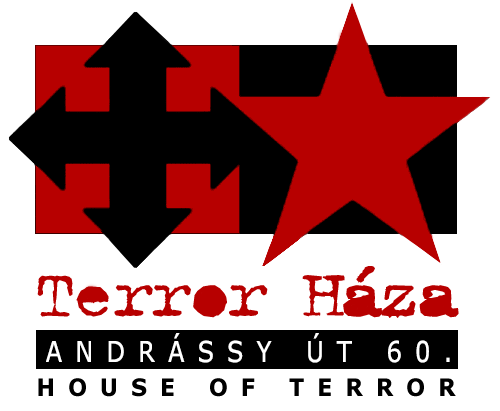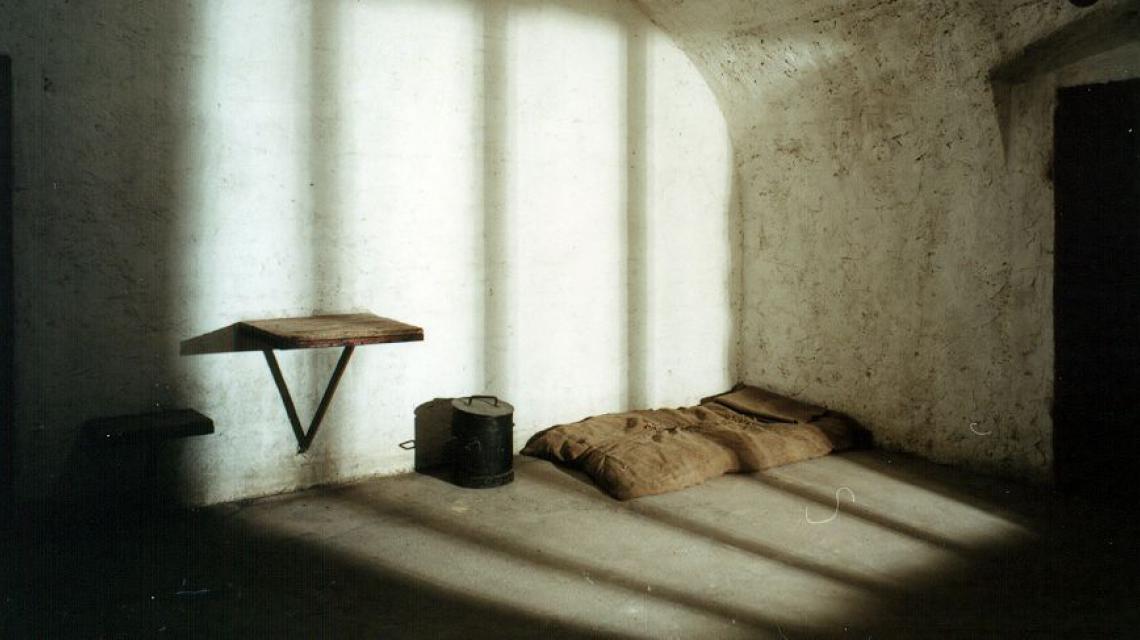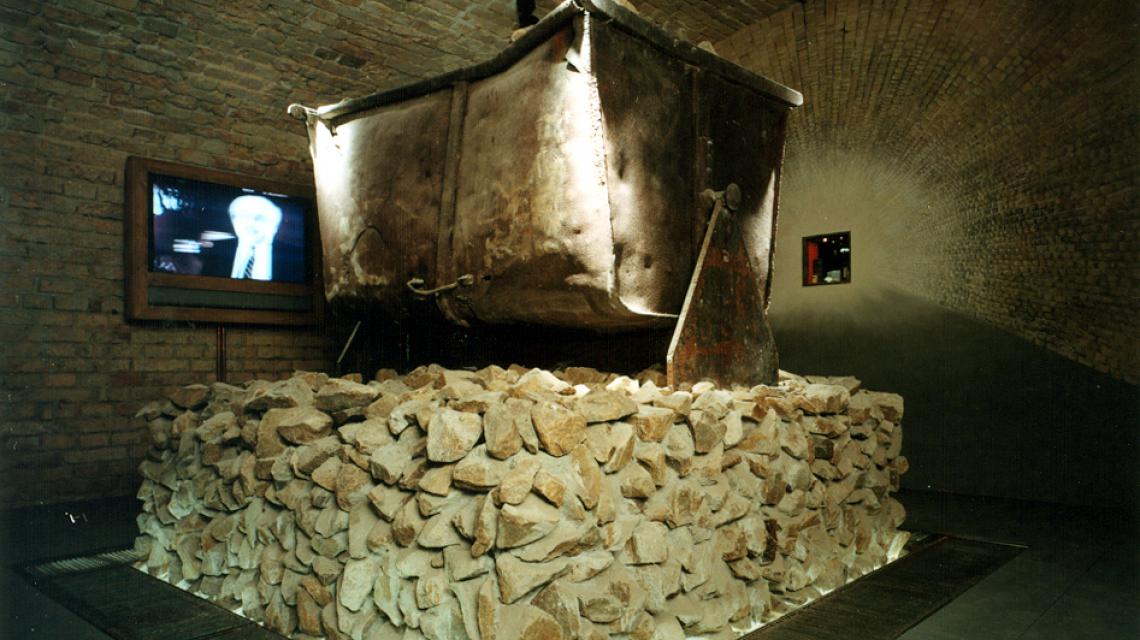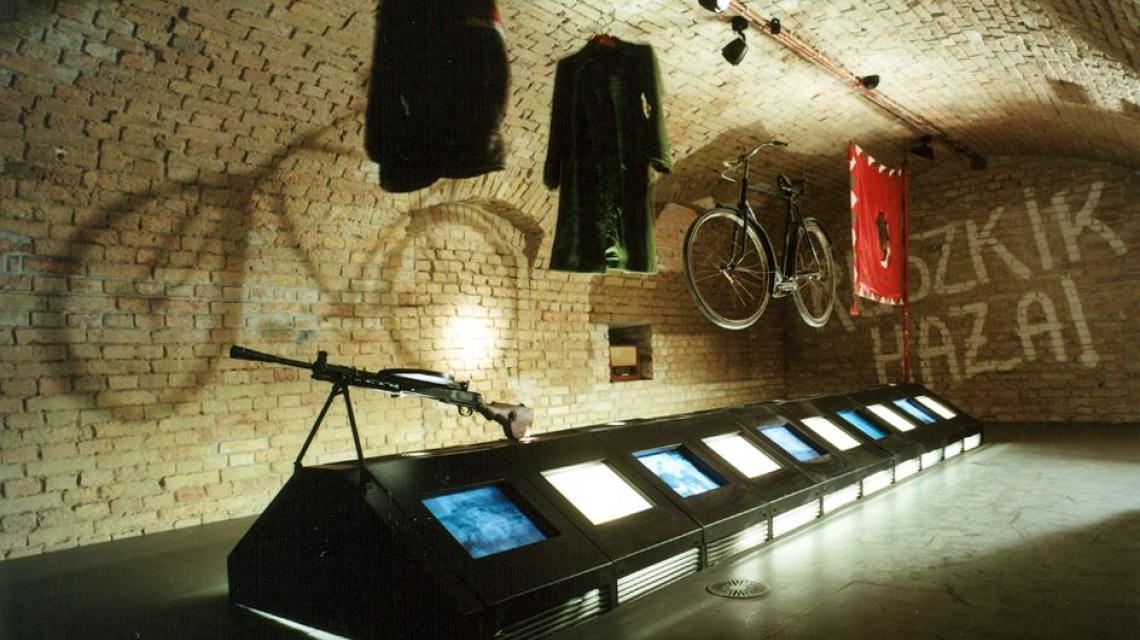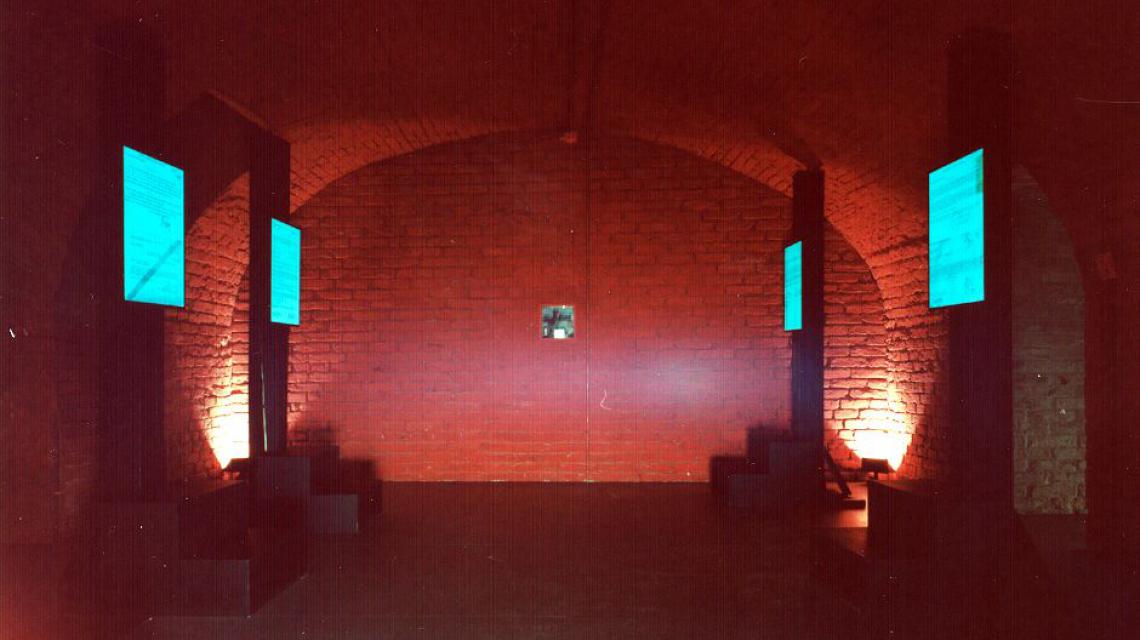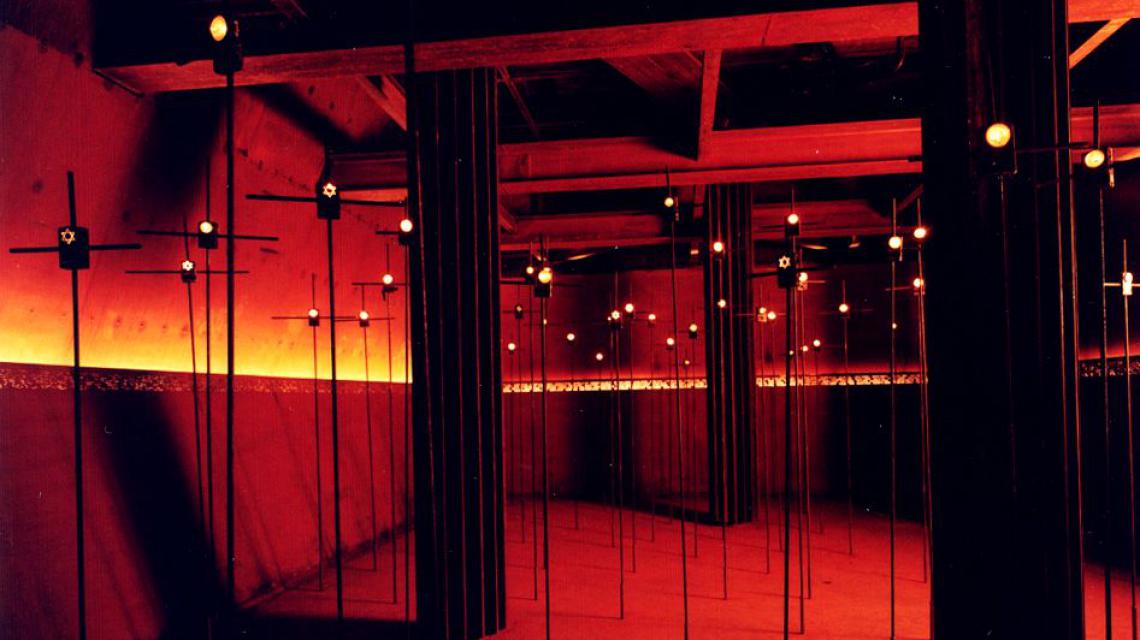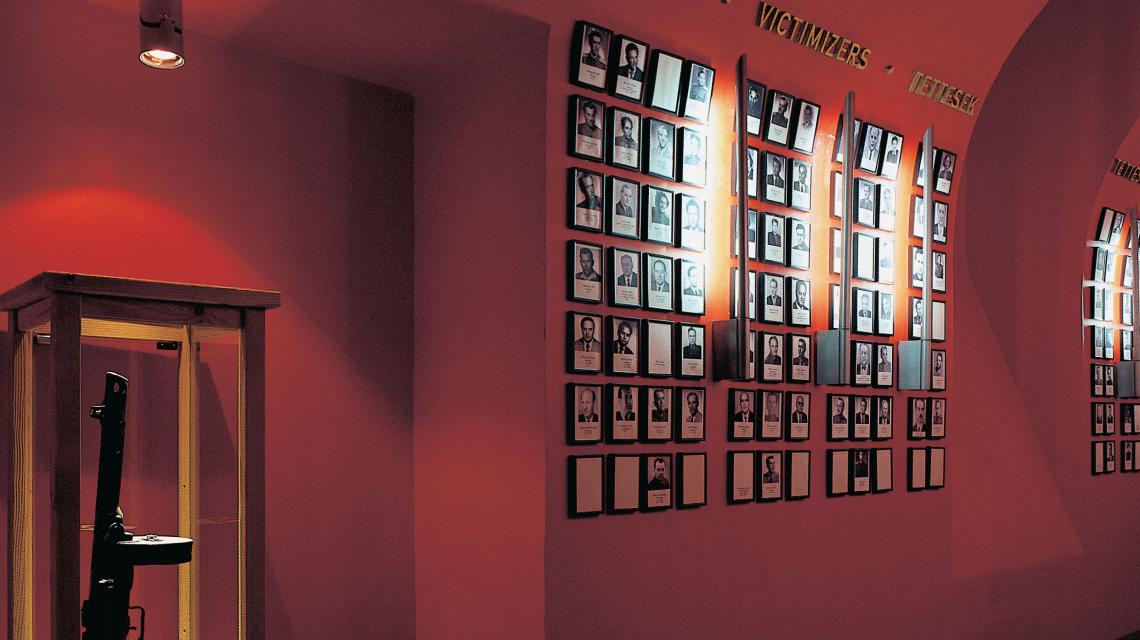The hall conjures up the Revolution's events, and is a memorial to the fallen heroes. We can view here the leather coat of Gergely Pongrátz, the coat of one of the victims of the Mosonmagyaróvár fusillade, as well as a DP automatic rifle. A Molotov cocktail and a bicycle fork damaged by a shell can be seen in the glass case.
“What we would have thought impossible – that a people could single-handedly defeat a totalitarian state – has become reality.”
Raymond Aron
The dates 15 March and 23 October have special significance for the Hungarian nation. The former commemorates the heroic struggles of the 1848–49 Revolution and War of Independence, while 23 October draws attention to the most significant anti-communist struggle in world history after 1945. Despite the fact that it was suppressed, the 1956 Hungarian Revolution and Freedom Fight struck a fatal blow at the Soviet empire. Those in the West who had lent their sympathy and support to the communist human experiment were disillusioned to see the Soviets using tanks to bloodily crush the heroism of the Hungarians.
The Hungarian freedom fighters wanted national independence: they wanted the occupying Soviet Army to finally leave Hungary. They wanted freedom: the freedom to decide on the political and economic order of their country. For these goals they were willing to sacrifice their lives. Leading the masses in revolt were university students and young workers. Their demands and goals were shared by the whole nation, with the exception of diehard communists sponsored by the Soviets.
Why did the discontent that had built up for so long erupt in October 1956? The cause was that the neighbouring country of Austria had regained its independence in 1955, and the withdrawal route of the Soviet troops which had occupied it led through our country. The fact that a similar withdrawal was not occurring in Hungary led to tension which grew to an almost unbearable level. Then, in a closed session of the Soviet Communist Party in February 1956, General Secretary Nikita Sergeyevich Khrushchev exposed the crimes committed under Stalin. In the summer of 1956 workers in Poznań, Poland, rose up to demand better living conditions. On 23 October 1956 the Hungarian Revolution grew out of a demonstration of sympathy for the Poles. The armed intervention of the Soviet occupiers turned this into a freedom fight, a true war.
The lads and girls of Pest are among the greatest heroes in Hungarian history – despite the fact that the nation enjoyed freedom for just two weeks, until 4 November, and that thousands of Hungarians died in the fighting and the use of live fire against unarmed civilians. It is also despite the fact that, in retaliation against the Hungarian rebellion, the communists reasserted themselves with brutal reprisals which saw the execution of at least 230 people, the imprisonment of more than 26,000 and the internment of 13,000. Around 200,000 Hungarians fled their homeland in the face of the reprisals. In spite of all this! That brief spell of freedom was an important breath of fresh air that provided life-saving respite not only for Hungarians, but for all the peoples of the region.

